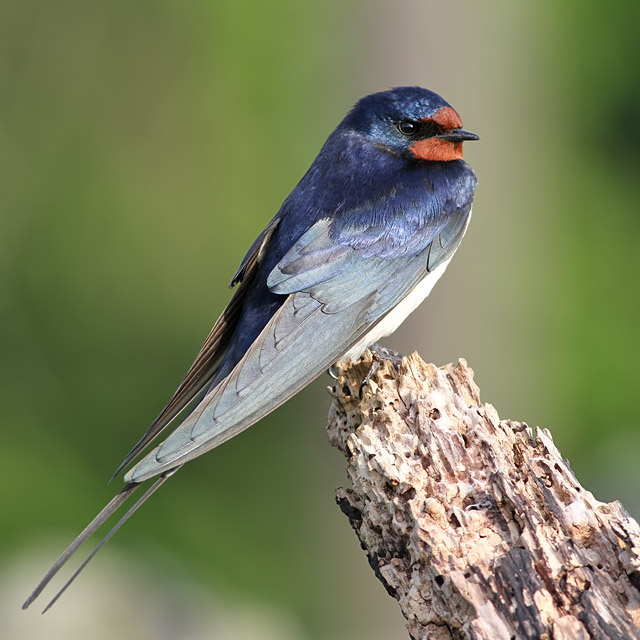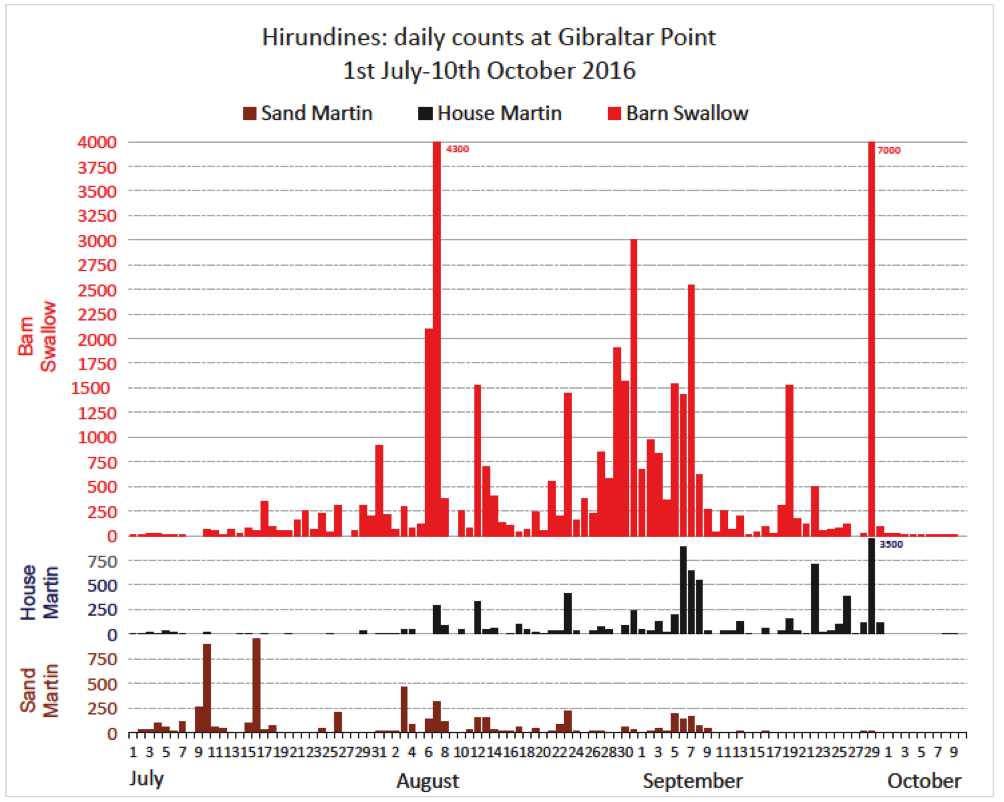Barn Swallow Hirundo rustica
Very common summer visitor and passage migrant. Exceptional in winter but recorded in most months.

In the late 1980s the Atlas put the Lincolnshire Swallow population at some 25,000 breeding pairs. It was thought the population had declined by up to 50% by the late 1990s but despite this it remains a very widespread bird. The long-term trend in the Lincolnshire BBS index since 1994 shows a 29% increase. That may have been coming off a sharp decline in the 1990s. The APEP4 adjusted population for the county in 2016 was 19000 pairs. Substantial movements of Swallows take place in spring and late summer. The LBR reports of peak daily counts at various sites in spring and autumn during 2014-2018 featured Gibraltar Point (6), Covenham Reservoir (3) and Witham Mouth (1). The spring peak was 1,005 at Gibraltar Point in May 2017 and the autumn peak 7,000 at Gibraltar Point on August 4th, 2014 and September 29th, 2016.
Ringing data from the BTO Online Ringing Report for 2016 showed BTO-ringed birds in Lincolnshire were recovered or controlled in Germany, Netherlands, Belgium, France, and Spain. Cumulative (historic) data shows that Barn Swallows ringed in Lincolnshire controlled or recovered outside Europe have been found in Algeria (6), Democratic Republic of Congo (1), Ghana (1), Mozambique (1), Namibia (2) and South Africa (14). Birds ringed abroad and controlled or recovered in Lincolnshire are fewer with two each from Belgium and Spain, and one from Sweden and Italy. In addition, there have been four of South African-ringed birds.
Hirundine movements at Gibraltar Point
Visual migration at Gibraltar Point has been diligently recorded over many years now, and it is interesting to compare the patterns of movement of Barn Swallows with that of House Martins and Sand Martins. The chart below takes as an example the daily hirundine counts at Gibraltar Point in one recent year (autumn 2016). Most of these counts involve birds moving south, but a few are of birds present during the day or roosting there. The overall numbers of Swallows are far higher than those of the other two species; the cumulative sums of daily counts for the whole period are Sand Martin 5755, House Martin 7577 and Barn Swallow 42084. Passage of Sand Martins starts ten days or so earlier than that of the other species, and it ends almost a full month earlier. The variations in numbers from day to day, no doubt, are governed to a large extent by weather conditions; it is noticeable that peaks for two or all three species coincide on several occasions. The general pattern and timing of these movements are likely to be broadly similar each year, but one striking feature of this year’s counts is the sudden clear-out of Swallows and House Martins in the largest movement of the year, on September 29th.

